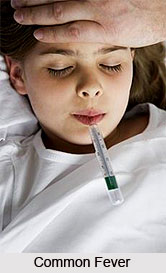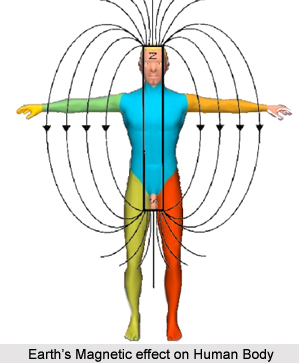 Common fever is almost always associated with a vast generality, which is perhaps only the most widespread infectious disease that is common to every household. With a rising body temperature, running nose, joint pains or loss of appetite being the most known and witnessed symptoms, common fever however is just not a notion which the common man possesses to go about. It is always advised in general that a doctor`s professional assistance is very much necessary prior to grabbing any nearby remedy. If performed on the contrary, the causes generally linked with common fever can of course aggravate to something more fatal. As such, the causes inducing common fever are at times just mild and unnoticed, which can go up to major viral or bacterial troubles, which already had done their act within the human blood vessels. To additionally just intensify other causes of common fever, the present and contemporaneous day-to-day life and the method of leading it, generally comes under heavy scanner, with professionals and other social active groups fighting against pollution and other unhygienic municipal reasons.
Common fever is almost always associated with a vast generality, which is perhaps only the most widespread infectious disease that is common to every household. With a rising body temperature, running nose, joint pains or loss of appetite being the most known and witnessed symptoms, common fever however is just not a notion which the common man possesses to go about. It is always advised in general that a doctor`s professional assistance is very much necessary prior to grabbing any nearby remedy. If performed on the contrary, the causes generally linked with common fever can of course aggravate to something more fatal. As such, the causes inducing common fever are at times just mild and unnoticed, which can go up to major viral or bacterial troubles, which already had done their act within the human blood vessels. To additionally just intensify other causes of common fever, the present and contemporaneous day-to-day life and the method of leading it, generally comes under heavy scanner, with professionals and other social active groups fighting against pollution and other unhygienic municipal reasons.
The cause of common fever is quite convoluted and complex a process, demanding the slightest of attention from both the doctor`s and the patient`s part. The human blood and lymphatic systems are the ones that give birth to white blood cells, which primarily function to fend off infection. As the white blood cells multiply and increase in number, as if representing a militia to combat the germs, they start to travel faster and faster within the vessels, lashing out at the germs. This attacking phenomenon causes one`s body to heat up tremendously, thus bringing in the fever or rise in body temperature. The hypothalamus in the brain, held as the body`s `heat regulating mechanism`, is profoundly affected by the pyrogens, or the white blood cells that are developed to fend off the infection. So, in fact, it can be confidently stated that the cause of common fever is what that fights the infection. That is also the basic reason why it is not advisable to try to reduce and lower a common fever too much or too fast. A temperature of 100 to 101 degrees Fahrenheit is considered favourable for the body, as it demonstrates that the body is defending against the infection. However, if a fever reaches too high a temperature beyond normality, measures needs to be taken to bring the fever down to some extent. Antipyretics are medications that help to reduce fever, such as tylenol, aspirin and the likes. It is also highly unwise to give a child aspirin products, if it is considered and well deemed that they have chicken pox or fatal influenza. Such a cause of fever could very well bring about a condition referred to as Reye`s Syndrome, which is forever considered potentially fatal by the medical domain.
However, in spite of such appalling information, the real cause of every common fever, including common cold, however, is the build up of `morbid matter` in the immune system, due to everyday mistaken feeding habits and unhealthy and insanitary conditions of daily living. Common fever is, hence, an intrinsic attempt on the part of the body to purge itself from toxic substances. Common fever represents that garbled and perturbed state of the body and is perhaps the perfect symptom of body`s battle against infectious germs; common fever is the most plebeian feature of several other subsequent diseases. Besides the above-mentioned causes of common fever, the ailment can also be induced by causes like - bacteria, virus, protozoa, sunstroke, intake of chemical or poison, FUO (fever of unknown origin), ill-timed feeding habits, foul and unhealthy living conditions, too much of physical toil, getting wet in the rain for a lengthened period of time, flawed and damaged medication, also including causes happening due to separate diseases, like common cold, influenza, typhoid, cholera, etc.
Common fever is most frequently caused due to infection with one of the more than 100 serotypes (a group of micro-organisms or viruses classed together, based on their cell surface antigens) of rhinovirus, a type of picornavirus. Some of the other major viruses causing common fever comprise - coronavirus, human para-influenza viruses, human respiratory syncytial virus, adenoviruses, enteroviruses, or metapneumovirus. Due to the several umpteen types of viruses and their inclination to incessantly mutate, it is concluded that it is just not possible to achieve complete immunity to the common fever.
A severe shortage of sleep has very often been connected to the cause of common fever. It is generally acknowledged that those who sleep less than seven hours per night, are three times more susceptible to build up an infection when exposed to a rhinovirus, as opposed to those who sleep more than eight hours per night.
It is also a well known fact that common fever or its causes, however unfailing they might sound, are very much still in an experimental process, yet to receive a stamp of authenticity. Various universities, researchers, scientists, doctors in universities and laboratories have long since devoted their time to passionately find out the exact reason of common fever and cold, however with not much fruitful ensuings. Generally not turning fatal each time, a cause of common fever amongst both adults and children are associated with everyday illnesses, believed to be cured by professionals; however, a common fever cure is basically only the curing of its symptoms and indications, never killing the virus itself. A primeval myth still much heard in contemporary times, arrogates that a cause of common fever can often be due to long time exposure to cold weather such as severe rain or winter conditions. Although common fevers are seasonal in nature, the extent reaching much more during winters, experiments so far have bombed to give rise to evidence that short-term exposure to cold weather or `direct chilling` augments vulnerability to infection. This very statement implies that the seasonal discrepancy in common fever instead happens due to modifications in behaviour, such as more time spent indoors at near immediacy to others.




















